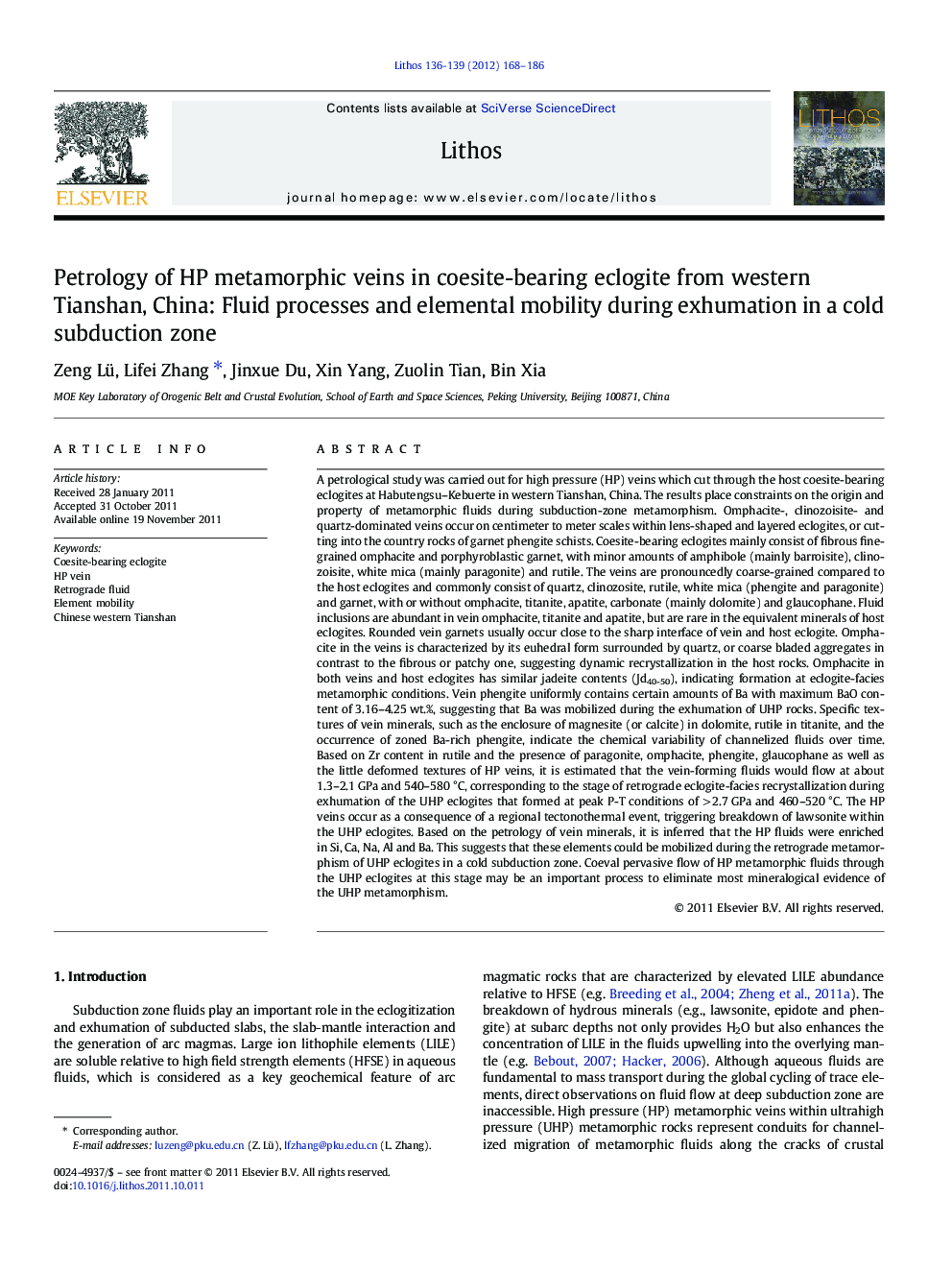| Article ID | Journal | Published Year | Pages | File Type |
|---|---|---|---|---|
| 4716647 | Lithos | 2012 | 19 Pages |
A petrological study was carried out for high pressure (HP) veins which cut through the host coesite-bearing eclogites at Habutengsu–Kebuerte in western Tianshan, China. The results place constraints on the origin and property of metamorphic fluids during subduction-zone metamorphism. Omphacite-, clinozoisite- and quartz-dominated veins occur on centimeter to meter scales within lens-shaped and layered eclogites, or cutting into the country rocks of garnet phengite schists. Coesite-bearing eclogites mainly consist of fibrous fine-grained omphacite and porphyroblastic garnet, with minor amounts of amphibole (mainly barroisite), clinozoisite, white mica (mainly paragonite) and rutile. The veins are pronouncedly coarse-grained compared to the host eclogites and commonly consist of quartz, clinozosite, rutile, white mica (phengite and paragonite) and garnet, with or without omphacite, titanite, apatite, carbonate (mainly dolomite) and glaucophane. Fluid inclusions are abundant in vein omphacite, titanite and apatite, but are rare in the equivalent minerals of host eclogites. Rounded vein garnets usually occur close to the sharp interface of vein and host eclogite. Omphacite in the veins is characterized by its euhedral form surrounded by quartz, or coarse bladed aggregates in contrast to the fibrous or patchy one, suggesting dynamic recrystallization in the host rocks. Omphacite in both veins and host eclogites has similar jadeite contents (Jd40-50), indicating formation at eclogite-facies metamorphic conditions. Vein phengite uniformly contains certain amounts of Ba with maximum BaO content of 3.16–4.25 wt.%, suggesting that Ba was mobilized during the exhumation of UHP rocks. Specific textures of vein minerals, such as the enclosure of magnesite (or calcite) in dolomite, rutile in titanite, and the occurrence of zoned Ba-rich phengite, indicate the chemical variability of channelized fluids over time. Based on Zr content in rutile and the presence of paragonite, omphacite, phengite, glaucophane as well as the little deformed textures of HP veins, it is estimated that the vein-forming fluids would flow at about 1.3–2.1 GPa and 540–580 °C, corresponding to the stage of retrograde eclogite-facies recrystallization during exhumation of the UHP eclogites that formed at peak P-T conditions of > 2.7 GPa and 460–520 °C. The HP veins occur as a consequence of a regional tectonothermal event, triggering breakdown of lawsonite within the UHP eclogites. Based on the petrology of vein minerals, it is inferred that the HP fluids were enriched in Si, Ca, Na, Al and Ba. This suggests that these elements could be mobilized during the retrograde metamorphism of UHP eclogites in a cold subduction zone. Coeval pervasive flow of HP metamorphic fluids through the UHP eclogites at this stage may be an important process to eliminate most mineralogical evidence of the UHP metamorphism.
► The HP vein in UHP eclogite was first reported in Chinese western Tianshan. ► HP fluids were enriched in Si, Ca, Na, Al and Ba which were mobilized during the exhumation. ► A mechanism for the genesis of channelized fluid flow and HP vein in UHP belt was put forwarded.
